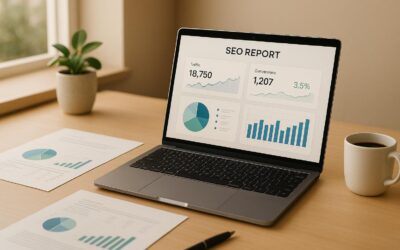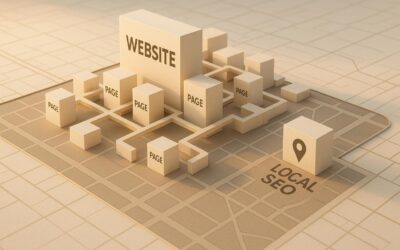Alt text is crucial for improving accessibility and boosting SEO. It provides text descriptions for images, helping visually impaired users and search engines understand the content. Here’s what you need to know:
- What is Alt Text? It’s a short description added to an image’s HTML to describe its content.
- Why it Matters: Enhances accessibility for screen readers, improves image search rankings, and helps search engines understand your content.
- How to Write Effective Alt Text:
- Keep it concise (under 125 characters).
- Describe the image clearly and accurately.
- Use keywords naturally but avoid stuffing.
- Match the image’s purpose and context.
Key Tip: Use alt text for meaningful images (e.g., products, infographics) and leave it empty (alt="") for decorative ones.
Alt text not only makes your site more accessible but also improves search visibility when done right. Start optimizing your images today!
Image ALT Text for SEO; What it is & How to Do it Strategically
Writing Effective Alt Text
Here’s how to create alt text that enhances both accessibility and SEO.
Keep Descriptions Short and Clear
Alt text should be concise – stick to 125 characters or fewer. This ensures it works well with screen readers and remains clear for search engines.
To write clear descriptions:
- Focus on the most important aspects of the image.
- Use straightforward, natural language.
- Include meaningful details without overloading.
- Skip phrases like "image of" or "picture of" – they’re unnecessary.
For instance, instead of saying "Image of a man typing on laptop", try: "Software developer writing code on MacBook Pro in office setting." It’s more descriptive and provides valuable context.
Add Keywords Without Overdoing It
Adding relevant keywords to your alt text can help with SEO, but only if done naturally. Overloading keywords can harm readability and even lead to penalties.
Tips for using keywords effectively:
- Place important keywords early, if appropriate.
- Use variations that make sense for the image and its context.
- Write grammatically correct sentences.
- Avoid stuffing keywords – prioritize clarity and flow.
Keep in mind, keywords should only be included when they genuinely describe the image.
Match Image Purpose and Content
Your alt text should align with both the image content and its purpose on the page. This helps search engines understand the connection between visuals and text, while also improving accessibility for users.
Key considerations for context:
- How the image supports the surrounding content.
- Any actions or interactions shown in the image.
- Specific product or service details, if relevant.
- The emotional or informational value the image adds.
Examples of well-crafted, context-aware alt text:
| Image Type | Poor Alt Text | Effective Alt Text |
|---|---|---|
| Product Image | "Shirt" | "Men’s navy cotton Oxford button-down shirt with chest pocket" |
| Infographic | "SEO chart" | "Bar graph showing correlation between alt text optimization and image search rankings" |
| Action Shot | "Person working" | "Digital marketing specialist analyzing SEO metrics on dual monitors" |
Alt text should always enhance the user experience while supporting your content’s goals and improving search visibility. Make it relevant, clear, and purposeful.
When to Add or Skip Alt Text
Use alt text for images that provide important information, and leave it empty (alt="") for decorative ones. This keeps your code clean and improves SEO. Here’s how to decide whether to use detailed alt text or an empty attribute.
Content-Rich Images
Add detailed alt text to images that deliver key information.
Examples of important visual content:
- Product photos (e.g., electronics, clothing)
- Team headshots
- Infographics and charts
- Technical diagrams and illustrations
- Screenshots showing functionality
- Images with embedded text
Your alt text should describe the image’s key details and context clearly.
| Image Category | Example Alt Text | Purpose |
|---|---|---|
| Product Photo | "iPhone 14 Pro in Space Black with triple-lens camera system" | Helps users and search engines understand features |
| Data Visualization | "Q1 2025 revenue growth chart showing 45% increase from previous quarter" | Shares statistical insights with all users |
| Tutorial Screenshot | "WordPress dashboard highlighting the ‘Add New Post’ button in top menu" | Provides clear instructional context |
Decorative Images
For images that are purely decorative, a different approach is needed.
When to skip alt text:
- Background patterns
- Decorative borders or icons
- Spacing elements
- Aesthetic-only graphics
- Duplicate images (if the content is already explained in nearby text)
- Design elements that don’t add meaning to the page
Even for decorative images, include alt="". This aligns with WCAG accessibility standards and ensures clean coding practices.
If the image doesn’t contribute to understanding the content, treat it as decorative.
sbb-itb-880d5b6
Technical Implementation Guide
Required HTML Attributes
Every image tag must include an alt attribute. Here’s the basic syntax:
<img src="product-image.jpg" alt="Description goes here"> For purely decorative images, use an empty alt attribute:
<img src="background-pattern.jpg" alt=""> Important implementation points:
- Always include the
altattribute in all<img>tags. - Wrap the alt text in double quotes.
- Properly encode special characters in the alt text to avoid errors.
Alt Text for Different File Types
Different image formats may require slightly varied approaches for alt text. Here’s a quick guide:
| Image Format | Implementation Example | Notes on Usage |
|---|---|---|
| JPEG/PNG | <img src="photo.jpg" alt="Red sports car"> |
Works well for most situations. |
| SVG | <svg role="img" aria-label="Company logo"> |
Use ARIA labels (e.g., aria-label) to enhance accessibility. |
| Background CSS | .hero-image { background-image: url('bg.jpg'); } |
Add descriptive text to nearby content. |
| Responsive Images | <picture><source>...<img alt="Product photo"> |
Place the alt text only on the <img> tag. |
These examples should help you implement alt text effectively across different scenarios.
Prioritize Key Information
When creating alt text, focus on the most important information first. Here’s a simple structure to follow:
- Primary subject or action
- Key distinguishing features
- Contextual details, if relevant
Example:
<!-- Well-structured alt text --> <img src="ceo-keynote.jpg" alt="CEO Sarah Johnson presenting Q2 earnings report at annual shareholder meeting"> <!-- Poorly-structured alt text --> <img src="ceo-keynote.jpg" alt="Annual shareholder meeting where our CEO is showing some slides about earnings"> Optimization tips for alt text:
- Keep it concise – ideally under 125 characters to ensure screen readers handle it efficiently.
- Use proper punctuation but skip unnecessary symbols.
- Include relevant keywords naturally, but avoid keyword stuffing.
- Test the alt text using screen readers to ensure clarity and effectiveness.
Wrapping It Up
Let’s pull together the most important alt text practices to keep your site consistent and accessible. Here’s a quick breakdown of the key takeaways from our alt text guidelines. Writing effective alt text requires attention to detail and uniformity.
Quick Reference Table
| Aspect | Best Practice | Common Mistake to Avoid |
|---|---|---|
| Length | Stay under 125 characters | Avoid long, paragraph-style descriptions |
| Keywords | Use naturally and when relevant | Don’t overstuff or force keywords |
| Context | Reflect the image’s purpose and content | Avoid vague terms like "image" or "photo" |
| Technical | Add alt attributes to all image tags | Don’t leave alt attributes blank for images |
| Structure | Start with the main subject | Don’t bury key details in the text |
These tips not only make image optimization easier but also improve both SEO and accessibility.
Why Alt Text Matters for SEO
Alt text isn’t just about accessibility – it also plays a role in your site’s search performance. Search engines rely on clear alt text to better understand and index your images, which can improve your rankings.
Here’s how it helps:
- Improves image visibility in search results
- Increases page relevance for your target keywords
- Boosts overall content optimization for search engines
When applying alt text, keep it consistent while tailoring each description to fit the image’s role and purpose. On the technical side, make sure your CMS supports proper alt text formatting, and schedule regular audits to keep your image library up-to-date.
FAQs
How can I write alt text that improves accessibility and supports SEO without overusing keywords?
To create effective alt text that enhances both accessibility and SEO, focus on writing a clear and concise description of the image that reflects its content and purpose. Incorporate relevant keywords naturally, but avoid overloading or forcing them into the text.
Alt text should provide meaningful context for users with visual impairments, ensuring it communicates the image’s function or message. At the same time, it helps search engines better understand the image, contributing to improved search visibility. Strive for balance – prioritize user experience while keeping SEO in mind.
When is it appropriate to leave the alt attribute empty for an image?
The alt attribute can be left empty in specific cases where the image serves a purely decorative purpose or adds no meaningful content to the page. For example, if an image is used solely for visual aesthetics, such as a background pattern or a decorative border, leaving the alt attribute empty ensures screen readers skip it, improving accessibility for users.
In addition, if an image is already described in nearby text or is part of a link with descriptive anchor text, the alt attribute can be left empty to avoid redundancy. To properly leave it empty, use an empty string (alt="") in the HTML code.
How does alt text help improve image search rankings and boost overall SEO performance?
Alt text plays a crucial role in improving image search rankings and enhancing overall SEO performance. It provides search engines with descriptive information about an image, making it easier for them to understand the image’s content and context.
By including clear and relevant alt text, your images are more likely to appear in search results for related queries. This not only increases your website’s visibility but also drives more organic traffic. Additionally, alt text improves accessibility for users who rely on screen readers, creating a better experience for all visitors.




